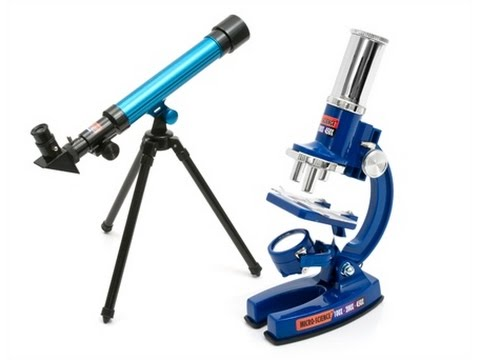Microscopes and Astronomical Telescopes (Reflecting and Refracting) and their Magnifying Powers
The telescope is an optical instrument that is having two optical elements, an eyepiece, and an object. Each of the optical telescopes will be in one of the categories of reflecting or refracting. This classification is based on the method, that is used for focusing the image. The refracting telescopes use the lenses for gathering and focusing the light, whereas, in the reflecting telescopes the mirrors are used. The refracting telescopes are gathering a huge amount of light to the lens, as compared to the possibility of gathering with the naked eye. In this way, a clearer, magnified, and a brighter image is formed. The first telescope to be invented as used was the refracting telescope. Currently, the reflecting telescopes are used more, as they are highly capable to see the farther object most clearly.

Microscopes

In the compound microscope, a simple combination of two converging lenses is used for the production of an effective magnifier. In the diagram shown above, the lens is placed closest to the object and is known as objective, whereas, the second lens is the eyepiece. It causes the formation of the intermediate image, by the objective near the object focal plane of the eyepiece. Among the microscopes, the refracting type of microscopes is commonly used.
Magnifying Power of Telescopes and Microscopes

In both microscopes and telescopes, the objective lens causes the formation of the real image of the object. Then the first image becomes a source of the object for the second lens known as the eyepiece. By the proper adjustments of the instrument, makes the eyepiece to form the final image. The angular magnification can be defined as the angle subtended by the final image divided by the angle subtended when an object is viewed by the naked eye. This magnification can be determined by the measurement of the apparent height of the image and height of an object at some commonplace from the distance of the observer. The common distance from the observer is canceled out so that the magnification is equal to the ratio of the apparent height of the image to the apparent height of the object.
For measurement of the magnification, the focal length of all lenses is measured in the first step. The light rays coming to the lens, from a faraway point, will be approximately parallel to the axis. Both telescopes and microscopes function similarly and help to view the distant objects. In both instruments, the concave and convex glasses are used for the magnification of the interesting objects.